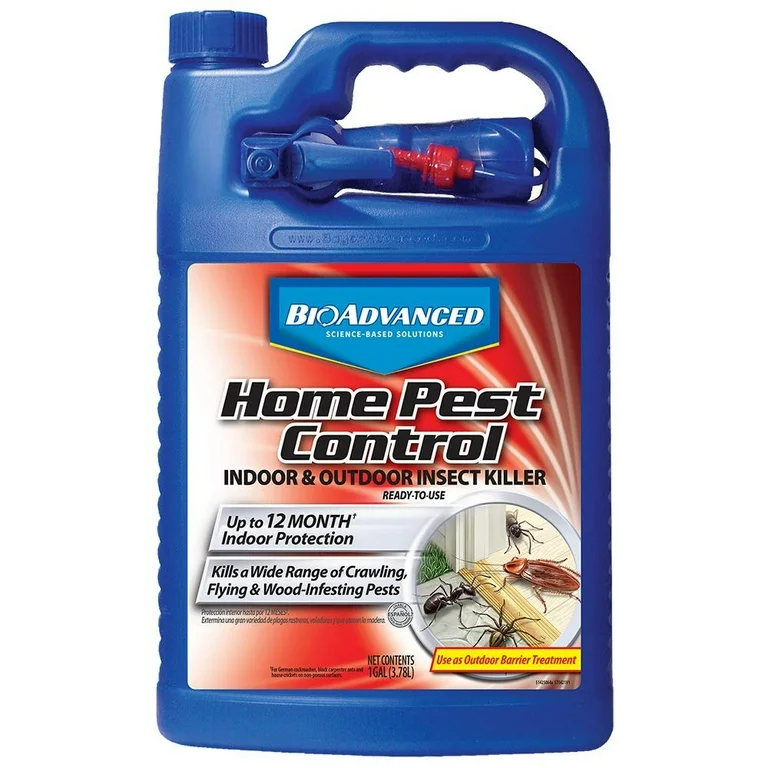Dependable A1 Bed Bug Exterminator Charlotte - Do Away With Bed Bugs Quick
Dependable A1 Bed Bug Exterminator Charlotte - Do Away With Bed Bugs Quick
Blog Article
Bed Bug Therapy Breakdown: Comparing Chemical Vs. Non-Chemical Solutions
In the realm of bug control, especially when managing the persistent problem of bed pests, the choice in between chemical and non-chemical therapy remedies can be a critical one. Both strategies offer distinct advantages and drawbacks, influencing variables such as effectiveness, security considerations, and overall price. By examining the nuanced information of each method, a more clear understanding of which path to go after in resolving a bed insect infestation can be attained.
Efficiency of Chemical Therapies
Chemical therapies for bed insect problems have actually been extensively acknowledged for their rapid and potent efficacy in removing these parasites. When taking into consideration the performance of chemical therapies, it is important to recognize that they can provide a complete and fast remedy to a bed bug trouble. Specialist pest control operators frequently rely upon pesticides to target bed pests at various phases of their life cycle, consisting of eggs, fairies, and grownups. These chemicals typically function by interfering with the bed bugs' nerves, causing paralysis and eventual death.
In addition, chemical treatments have the advantage of supplying residual effects, indicating that they can continue to remove bed pests even after the first application. This recurring activity is specifically advantageous in combating any kind of possible re-infestations. Furthermore, the rapid action of chemical treatments can bring relief to people facing serious bed bug invasions, enabling them to regain control of their space rapidly.
Safety And Security Interest In Chemical Solutions
One important aspect that requires careful consideration when utilizing chemical services for bed pest treatment is making sure the security of passengers and the environment. Exposure to certain chemicals utilized in bed insect treatments can lead to breathing concerns, skin irritation, or other negative reactions, especially in people with pre-existing conditions or level of sensitivities.
Moreover, the ecological influence of chemical solutions is another considerable consideration. Some chemicals made use of in bed bug treatments may be damaging to helpful pests, wildlife, and environments if they leach into the dirt or water systems. It is necessary to use chemical treatments judiciously, adhering to safety guidelines, and taking into consideration less toxic choices to reduce these risks and make certain the reliable and safe management of bed bug invasions.
Benefits of Non-Chemical Techniques
Taking into consideration the prospective security problems and ecological effect related to chemical solutions for bed bug treatment, discovering non-chemical techniques presents an appealing option with several distinct advantages. Non-chemical methods offer a much safer alternative for families, especially those with children, family pets, or people delicate to rough chemicals. These approaches get rid of the threats of exposure to poisonous substances, lowering the capacity for negative health and wellness effects. Moreover, non-chemical therapies are eco-friendly, as they do not add to air or water air pollution, making them a lasting selection for bug control.
In addition, non-chemical remedies can be efficient in targeting bed pests, consisting of hard-to-reach areas where chemical treatments might not pass through - A1 charlotte bed bug exterminator. Methods such as warm treatment, vacuuming, vapor cleaning, and bed mattress coverings give complete elimination without the use of harmful chemicals.
Limitations of Non-Chemical Treatments

Furthermore, non-chemical therapies frequently call for multiple applications to accomplish effective eradication. This can be time-consuming and might not always ensure complete elimination of all bed insects and their eggs, especially in concealed or hard-to-reach locations.
Additionally, the success of non-chemical treatments greatly relies on appropriate execution and thoroughness, which can be testing for individuals without great site specialist know-how. Poor application of non-chemical methods may result in insufficient eradication, bring about relentless problems and the need for additional treatments.
Therefore, while non-chemical therapies have their benefits, it is important to recognize these limitations and consider them when figuring out one of the most effective method for taking care of bed pest infestations.
Price Comparison: Chemical Vs. Non-Chemical Options
Provided the constraints related to non-chemical therapies, an important element to examine in the context of bed bug monitoring is the price contrast in between chemical and non-chemical options. Chemical therapies usually involve the application of insecticides by specialists, which can range from $250 to $900 per area, depending upon the extent of the infestation and the size of the area to be dealt with. On the other hand, non-chemical treatments like warmth therapy or heavy steam can be much more expensive, with costs ranging from $1,000 to $6,000 for a whole home. While the first cost of chemical therapies might seem reduced, numerous treatments may be called for to fully eradicate the problem, possibly increasing the total expense. On the other hand, non-chemical alternatives may provide an extra eco-friendly and lasting service, although they can be cost-prohibitive for some individuals. Inevitably, when considering the cost of bed bug treatment alternatives, it is essential to weigh the ahead of time expenses versus the effectiveness and long-lasting sustainability of the selected technique.
Verdict

Thinking about the prospective safety problems and ecological effect connected with chemical services for bed bug therapy, checking out non-chemical methods presents a promising choice with numerous distinct benefits.Given the constraints linked with non-chemical treatments, an important aspect to assess in the context of bed bug administration is the price comparison in between chemical and non-chemical alternatives. In comparison, non-chemical treatments like heat therapy or steam can be a lot more expensive, with expenses ranging from $1,000 to link $6,000 for an entire home. While the preliminary price of chemical therapies may appear reduced, multiple therapies may be called for to fully remove the problem, possibly increasing the overall expense.In verdict, when contrasting chemical and non-chemical bed bug treatment choices, it is essential to think about performance, safety, benefits, restrictions, and cost.
Report this page